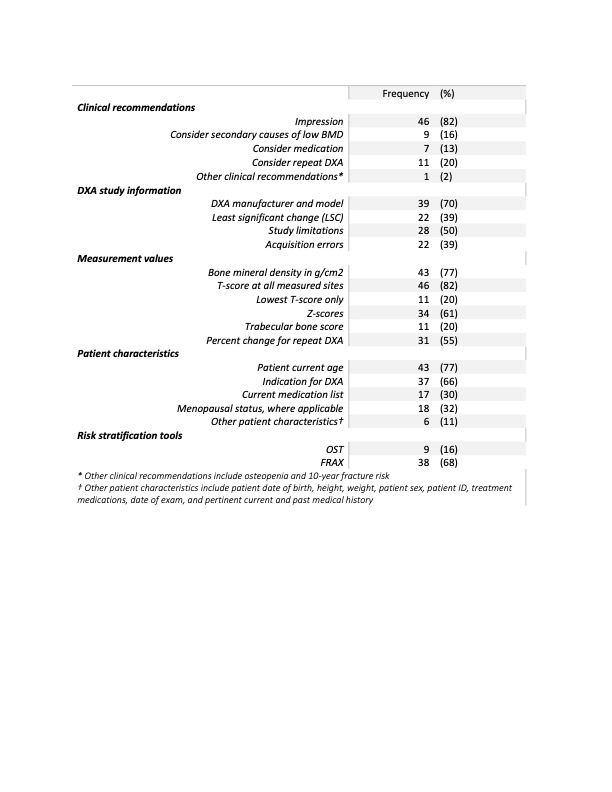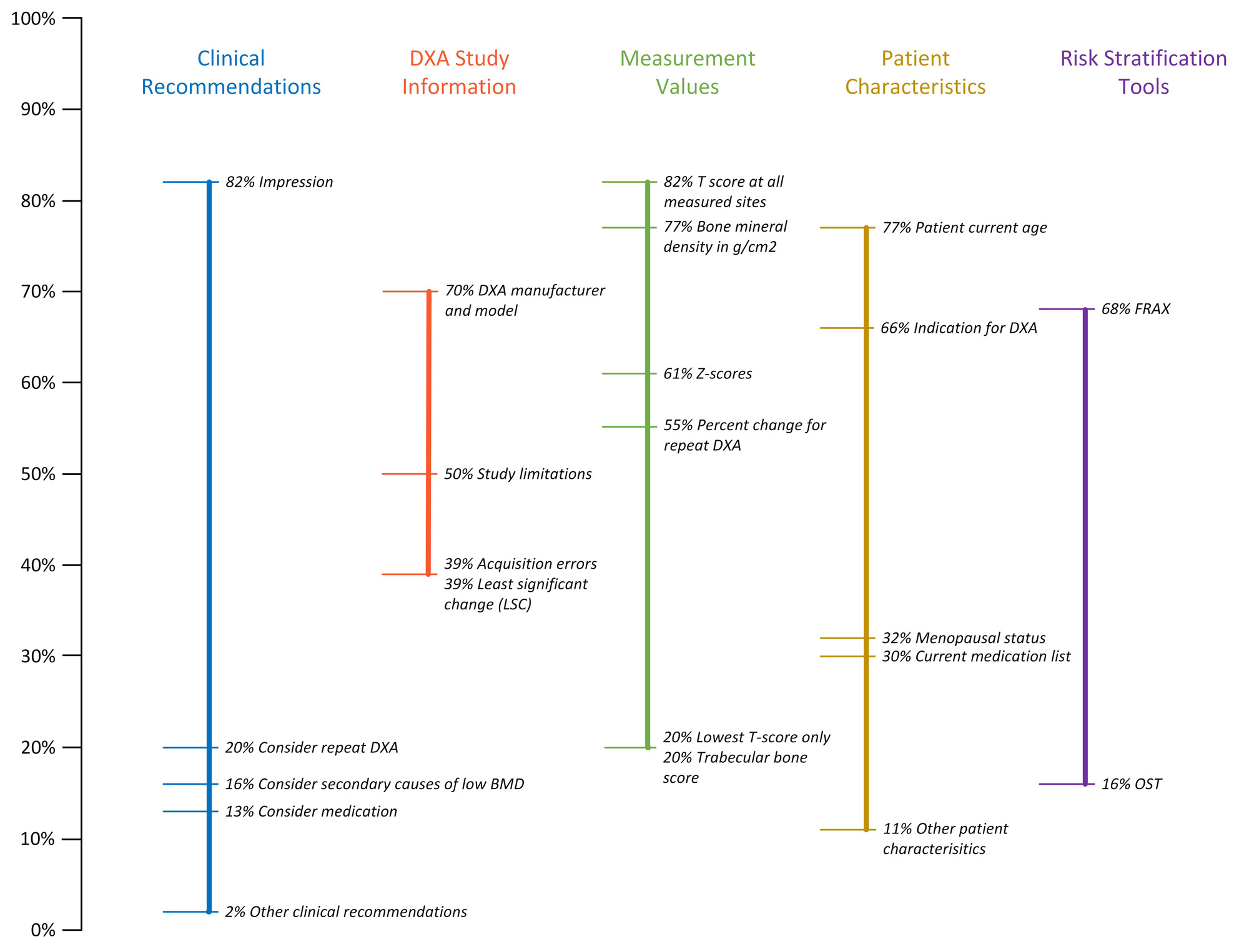Session Information
Date: Tuesday, November 14, 2023
Title: (1996–2018) Osteoporosis & Metabolic Bone Disease – Basic & Clinical Science Poster
Session Type: Poster Session C
Session Time: 9:00AM-11:00AM
Background/Purpose: Dual-energy x-ray absorptiometry (DXA) is an important tool to identify Veterans with osteoporosis, assess fracture risk, and monitor treatment response. Variability in DXA acquisition, analysis, interpretation, and reporting is common despite existing best practice guidelines, and can adversely impact the information communicated to the ordering provider. The purpose of this quality improvement study was to evaluate the processes for national VA DXA reporting. This project was part of a larger evaluation to understand access to and quality of DXA services in the VA.
Methods: A work group of radiologists, nuclear medicine physicians, social scientists, endocrinologists, and rheumatologists were convened to develop a national bone densitometry survey. Through an iterative process, the group drafted domains, then identified topics and developed questions for each domain. The DXA reporting domain evaluated information typically included on DXA reports received by the ordering VA provider and time spent creating the reports. This study was reviewed by the Iowa City VA Research and Development Office. Survey invitations were emailed to personnel involved in DXA acquisition and interpretation at 178 facilities. Staff were given 60 days to complete the survey.
Results: Fifty-six of 178 sites (31%) completed information on data elements included in a standard DXA report. Most reports provided information on age (n=43,77%), DXA manufacturer and model (n=39,70%), and indication for DXA (n=37, 66%), while few routinely reported study limitations (n=28,50%), acquisition errors (n=22,39%), menopausal status (n=18,32%), and relevant medications (n=17,30%).DXA report elements used in clinical decision-making varied with most sites reporting T-scores at all measured sites (n=46,82%), impression (n=46,82%), bone mineral density (BMD) in g/cm2 (n=43,77%), and FRAX® (n=38,68%).Some sites reported Z-scores (n=34,61%), percent change in BMD on repeat DXA (n=31,55%), and least significant change (n=22,39%), while few reported trabecular bone score (n=11,20%), lowest T-score only (n=11,20%), and Osteoporosis Self-assessment Tool scores (n=9,16%).Few sites provided guiding recommendations beyond the DXA impression such as considering medications to reduce bone loss (n=7,13%), evaluation for secondary causes of osteoporosis (n=9,16%), or when to repeat DXA (n=11,20%).Nearly a third of sites (n=16,29%) indicated that DXA reports requires a “good amount” or “a lot” of time to prepare.
Conclusion: There is significant variability in the degree to which DXA facilities follow best practice standards for DXA reports, even in an integrated healthcare system. Most VA DXA reports include basic information for clinical decision-making, but many do not routinely provide elements important to interpretation of the report and clinical care guidance. Many DXA sites report substantial effort is needed by diagnosticians to prepare DXA reports. This study uses self-reported data and is limited by number of respondents. Our results will be used to facilitate improvement in DXA reporting quality across radiology and specialty care services in the VA.
To cite this abstract in AMA style:
Miller K, Steffen M, McCoy K, Mengeling M, Davila H, Wardyn S, Solimeo S. Variation in Dual-energy X-ray Absorptiometry Reporting: A National Survey of Veterans Health Administration Clinics [abstract]. Arthritis Rheumatol. 2023; 75 (suppl 9). https://acrabstracts.org/abstract/variation-in-dual-energy-x-ray-absorptiometry-reporting-a-national-survey-of-veterans-health-administration-clinics/. Accessed .« Back to ACR Convergence 2023
ACR Meeting Abstracts - https://acrabstracts.org/abstract/variation-in-dual-energy-x-ray-absorptiometry-reporting-a-national-survey-of-veterans-health-administration-clinics/



